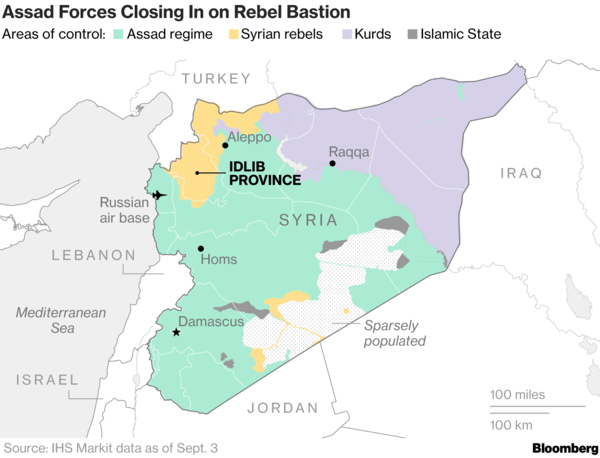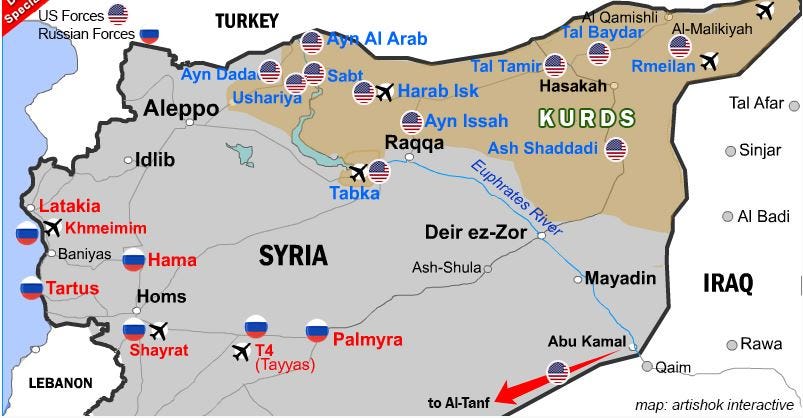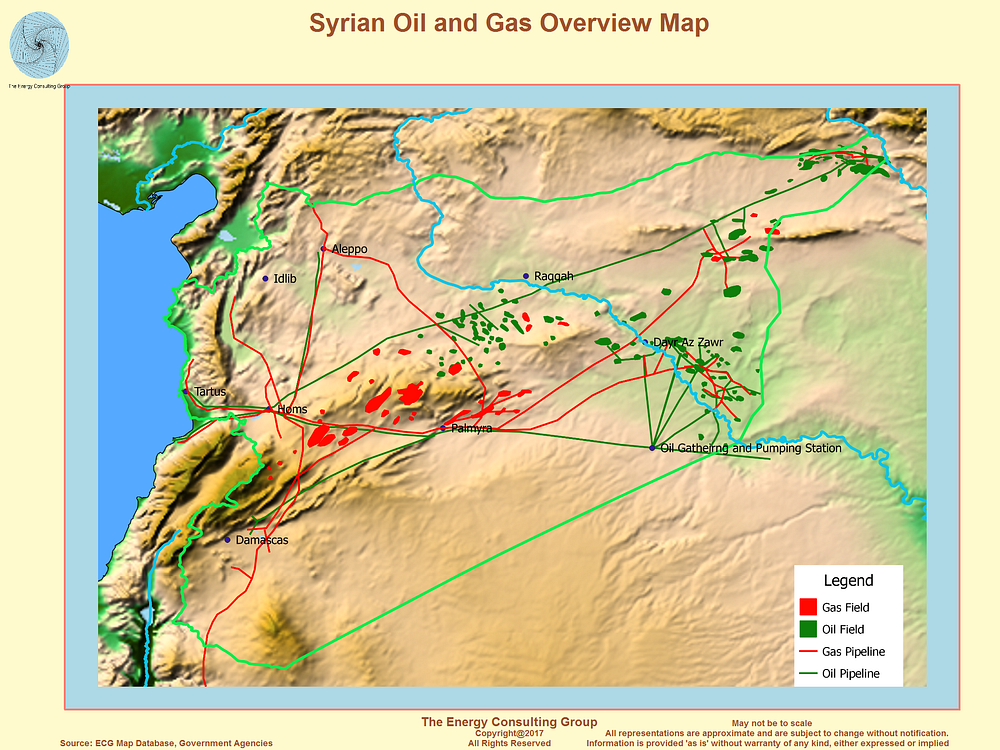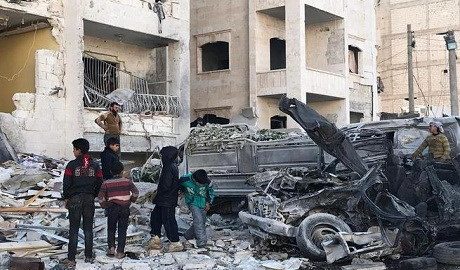By Kent R. Kroeger (September 14, 2018)
With an impending ‘final’ battle for the last major rebel stronghold in Idlib, Syria, many observers are suggesting this may be the final stage of the Syrian civil war which started in 2011.
Several significant in the past year are generally cited as evidence of the war coming to a close. “For one thing, 2017 marked the fall of opposition-held Eastern Aleppo to government forces,” says journalist Alessandria Masi, managing editor for Syria Deeply. “The evacuation of rebels from Aleppo to Idlib that followed was the first of many such movements to take place in other areas of Syria over the past year. The battle against the so-called Islamic State has been — to a certain extent — won. What’s more, the Syrian government has made a major push to spur reconstruction, development and financial investment in the country.”
While pockets of Islamic State forces (ISIS) and Syrian rebels still exist in southern Syria, the last major concentration of anti-Assad forces reside in the Idlib province (see Figure 1). In addition, Kurdish forces with the support of U.S. Special Operations forces control most of northeast Syria.
Should the Assad forces regain control of Idlib province, the government will control two-thirds of the territory it controlled prior to the start of the civil war seven years ago.
Figure 1. Status of Syrian Civil War (September 2018)

At the same time, Russian, U.S., Iranian, and other foreign fighters will still be firmly entrenched within Syria (see Figure 2), not to mention Israel’s continued control of the Golan Heights (internationally recognized as Syrian territory) and Turkey’s opposition to any Kurdish independence push in northeast Syria.
Given the stark realities on the ground, the notion that the Syrian conflict is winding down appears somewhat optimistic.
Figure 2. Locations of U.S. and Russian Troops in Syria (January 2018)

Many unresolved aspects of the Syrian civil war could ignite a new, and possibly deadlier, round of Syrian fighting. Most prominent among them is the fact that U.S. and Kurdish forces control a substantial percentage of Syria’s oil fields and its most productive natural gas field near Deir Ezzor (also known as Dayr Az Zawr) (see Figure 3).
Figure 3. Location of Syrian Oil and Gas Fields

Before the civil war, Syria’s GDP provided approximately 20 percent of the Syrian government’s revenues and about 40 percent of its export receipts, according to The World Bank.
The Bashar al-Assad government is already strapped for money as it begins to fund reconstruction in post-civil war Syria, and if Damascus cannot leverage the entirety of its energy production assets for generating export revenues, it is hard to imagine how Syria can avoid taking on enormous levels of additional foreign debt. As of 2017, the CIA estimated Syria’s gross public debt as a percentage of GDP was 58 percent.
“Syria as a centrally managed state no longer exists,” says Osama Kadi, founder and president of the Syrian Economic Task Force. “Analyzing the Syrian economy in terms of it being a comprehensive state economy is meaningless because there are four influential military powers on the ground: Iran, Russia, Turkey and the U.S. They have control over areas and resources that the Syrian regime does not.”
For example, when the U.S. ousted ISIS from Raqqah, its forces also took control of the majority of Syria’s oil fields, the revenues from which will be critical for Syria’s reconstruction. “Thus, if no deal is reached between Russia and the U.S., which most likely will be the case, then each area of influence will have separate reconstruction and development plans,” says Kadi.
Unfortunately, there is already evidence that any attempted settlement regarding Syria’s oil and gas reserves, as small as they are relative to other oil and gas producing countries in the region, could turn violent.
Jared Szuba, writing for the DefenseReport.com, believes competition for control of Syria’s gas and oil fields was behind a brief but deadly skirmish near Deir Ezzor (also known as Dayr Az Zawr) between American forces and Russian paramilitary contractors on February 7, 2018, which left around 300 Russians dead and hundreds of pro-regime fighters injured.
On the night of February 7, hundreds of fighters from various countries, backed by artillery, multiple rocket launcher systems and Soviet tanks, emerged from a row of villages near the eastern Syrian city of Deir Ezzor and advanced towards the one of the country’s largest natural gas fields.
As the yet unidentified forces advanced on February 7th towards American positions controlling the Conoco natural gas field, which were captured in September 2017, US Army Brigadier General Jonathan Braga, director of operations, Combined Joint Task Force (Operation Inherent Resolve) picked up the phone used for Russian deconfliction to ascertain if Russian forces were in the area. When Gen. Braga’s Russian counterpart said ‘No,’ U.S. forces promptly unleashed three hours of airstrikes on the enemy positions, resulting in the death of hundreds of Russian contractors.
Since the incident, the U.S. military has been vague on what caused those events on the evening of February 7th, but Szuba believes a race between U.S. forces and pro-Syrian government forces, including Russians and Iranians, is the root cause:
The Department of Defense may have been covering for bold battlefield opportunism in the place of failed diplomacy. Shortly after the airstrike, there were multiple reports that there had been no such deconfliction line agreement at Deir Ezzor. An anonymous U.S. official told The Wall Street Journal in September that attempts to pressure Russia to commit to the line in the summer of 2017 “stalled,” and as a result, both sides dashed for the area’s oilfields.
In all probability, the pro-Assad forces were probing the American defensive positions on February 7th to determine how committed the Americans are to protect strategic territory, such as the Conoco natural gas field near Deir Ezzor.
According to Szuba, the Assad government considers control of its oil and gas fields as critical in financing the country’s reconstruction after seven years of war. Before resigning, U.S. Secretary of State Rex Tillerson even admitted that U.S. control of Syria’s oil and gas assets would be used as leverage against the Assad government once the civil war as effectively ended and ISIS has been defeated.
But more critically, the U.S. aims to prevent Iran from establishing a continuous land-route to its Mediterranean allies through Iraq and Syria’s Deir Ezzor corridor. An unbroken land transportation route from Iran to the Mediterranean would be a major strategic victory for Tehran and something the U.S., Israel and Saudi Arabia are unlikely to accept quietly.
And, finally, very little attention has been given to the Assad regime’s stated desire to recapture all Syrian territory lost during the civil war.
“Although the [government] essentially obtained victory after reconquering Aleppo city in its entirety, it still vows to retake all of Syria,” Aymenn al-Tamimi, research fellow at the Middle East, told Syria Deeply. “This intention needs to be taken seriously, especially with regards to the conflict with the armed opposition. Hopes that ‘deescalation’ will be conducive to bringing about a real political settlement and long-term toleration of formal opposition control of certain areas are mistaken. Whatever truth there might be to the supposed Russian reluctance regarding the military reconquest of particular places is not enough to restrain the government when it is intent on military reconquest and ‘softer landing’ methods have failed.”
If Szuba and al-Tamimi are correct, a Syrian government victory in Idlib will merely mark the end of the Syrian conflict’s first phase. The next combat phase may be driven by four factors: (1) Syria’s urgent need for oil and gas revenues to support reconstruction efforts, (2) the regime’s nationalist desire to regain control of all territory held prior to the civil war, (3) the enormous challenges Syria will face as it reincorporates the potentially millions of Syrian refugees who will return once security conditions allow, and (4) Iran’s ambition to control a continuous land corridor from Iran to the Mediterranean.
If these factors cannot be settled diplomatically through negotiations, and there is reason to think they will not, the likelihood of a military solution involving multiple countries substantially increases. And this new combat phase could escalate rapidly into a wider regional war given there is no timetable for Russian, Iranian, Turkish and U.S. forces to leave Syria.
When that much firepower under differing commands is put that close together, bad things often happen.
Israel and Saudi Arabia are already engaged in a semi-secret alliance to contain Iran’s influence throughout the Middle East. While Saudi Arabia and the United Arab Emirates have taken the lead on fighting Iranian proxies in Yemen (with substantial U.S. assistance), Israel has focused on attacking Iranian assets in Syria. The magazine, Foreign Policy, recently reported that Israel secretly armed and funded 12 Syrian rebel groups to push Iranian-backed forces and ISIS fighters away from the Israeli border.
Add to this volatile mix Israel’s strategic incentive in keeping Syria and Lebanon’s Hezbollah embroiled in Syria’s civil war and it becomes hard to be optimistic about Syria’s immediate future.
And still lurking behind the curtain are America’s neoconservative regime-change mavens, formerly led by late-Senator John McCain, who now believe they have figured out how to win a regime change war, and would love to demonstrate their newly-acquired wisdom by doubling-down on U.S. military commitments in Syria, Yemen, Afghanistan and half of Africa.
With every new atrocity against civilians in Syria, whether it be an illegal chemical or incendiary attack or a more ‘civilized’ barrage of artillery shells where the victims die under tons of rubble, the calls for a larger U.S. troop presence in Syria will grow louder. South Carolina Senator Lindsay Graham, former Secretaries of State John Kerry and Hillary Clinton, Tom Friedman, David Ignatius, and a vast assortment of former George W. Bush national security mavens are always prepared to appear on Morning Joe or Rachel Maddow to promote their forevermore discredited regime change agenda.
In other words, the Syrian conflict could get even uglier than it already is.
-K.R.K.
About the Author: Mr. Kroeger is a survey and statistical consultant with over 30 -years experience measuring and analyzing public opinion. He currently lives in New Jersey with his wife and son (You can contact him at: info@olsonkroeger.com)
